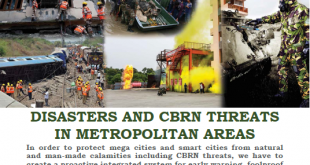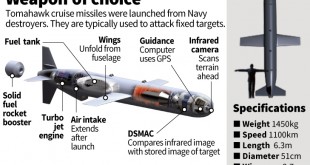Introduction: In an era defined by technological innovation and geopolitical uncertainty, the need for advanced defense systems has never been more critical. One area of growing interest is directed energy weapons, which utilize concentrated beams of energy to disable or destroy targets. The US military’s Directed Energy Front-Line Electromagnetic Neutralization …
Read More »Advancing CBRN Defense: Innovations in Standoff Detection Technologies
Introduction: In today’s volatile world, the threat of Chemical, Biological, Radiological, and Nuclear (CBRN) incidents looms large, necessitating advanced defense strategies to safeguard against potential risks. Recent history is fraught with examples of CBRN attacks, from the Tokyo subway sarin incident to the use of chemical weapons in the Syrian …
Read More »Beyond Laser Tag: The Future of Force-on-Force Military Training
For decades, military personnel around the world have trained for combat using laser-based systems like the Multiple Integrated Laser Engagement System (MILES). This technology, akin to a sophisticated game of laser tag, uses lasers attached to weapons and sensors on soldiers to simulate combat scenarios and provide real-time feedback on …
Read More »Unveiling the Future: AI’s Role in Precise Trajectory Prediction
Introduction: In today’s rapidly advancing world, the integration of artificial intelligence (AI) into trajectory prediction has become increasingly vital. From guiding autonomous vehicles to enhancing military defense systems, AI-powered trajectory prediction algorithms are reshaping various industries and paving the way for safer and more efficient operations. The Significance of Trajectory …
Read More »Advancing Battlefield Targeting by AFATDS: The Army’s Next-Gen Fires Platform
In the ever-evolving landscape of modern warfare, precision and agility are paramount. To maintain its edge on the battlefield, the US Army is embarking on a transformative journey with the development of the Advanced Field Artillery Tactical Data System Next (AFATDS Next). This ambitious initiative aims to revolutionize the Army’s …
Read More »The Screaming Scourge: Hypersonic Dual-Mode Ramjets with Rotating Detonation Combustion
In the realm of military technology, the landscape is continually evolving, with advancements pushing the boundaries of speed, maneuverability, and lethality. Among the latest innovations stands the Hypersonic Dual-Mode Ramjet with Rotating Detonation Combustion (HTDV-RDC), a groundbreaking development poised to revolutionize missile capabilities. An RDE is a type of internal …
Read More »One Shot, One Hit: The AI-Enabled Smart Scope Revolutionizes Precision
Across the vast expanse of the battlefield, where split-second decisions hold life-or-death consequences, soldiers demand tools that maximize their capabilities. Enter the Smart Scope – a technological marvel that fuses artificial intelligence (AI) with traditional optics, promising to revolutionize combat by enhancing precision and efficiency like never before. No longer just …
Read More »Unveiling the Global Small Arms Industry: Navigating Challenges and Opportunities
The global small arms industry stands as a multifaceted sector with far-reaching implications for national security, defense, law enforcement, and civilian firearms markets worldwide. As one of the most dynamic and complex segments of the defense industry, the small arms sector encompasses a diverse range of manufacturers, suppliers, and stakeholders, …
Read More »Loitering Munitions: Redefining Precision Strike Capabilities
In the ever-evolving landscape of modern warfare, the need for precision strike capabilities has become increasingly paramount. Among the latest innovations reshaping the battlefield is the emergence of loitering munitions, also known as suicide drones or kamikaze drones. These unmanned aerial vehicles (UAVs) are revolutionizing military operations by offering a …
Read More »The Evolution of Cruise Missiles: From Precision Strikes to Hypersonic, AI-Enabled Powerhouses
Introduction: In recent years, the landscape of military technology has been undergoing a rapid transformation, with cruise missiles emerging as one of the most formidable and versatile weapons in modern warfare. Once confined to relatively short ranges and limited capabilities, cruise missiles have evolved into long-range, hypersonic, nuclear-powered, and AI-enabled …
Read More » International Defense Security & Technology Your trusted Source for News, Research and Analysis
International Defense Security & Technology Your trusted Source for News, Research and Analysis

